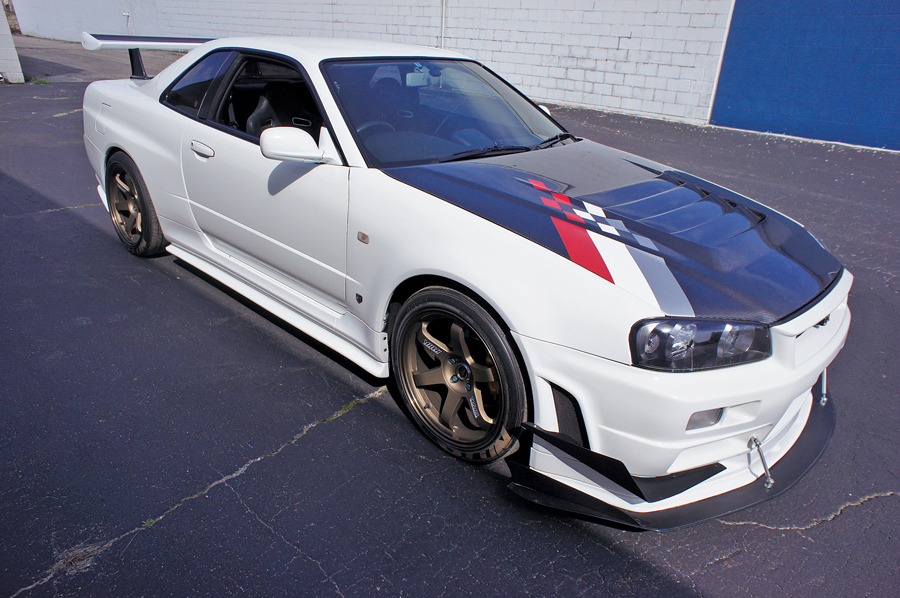- Turbocharged (Precision) 2.6-liter inline
- 6-cylinder engine
- 6-speed manual transmission
- Worldwide icon in the tuning world
- Front and rear spoilers
- Lower body aero elements
- Brembo 4-wheel disc brakes
- Nitto tires
- RAYS alloy wheels
- Air conditioning
- AM/FM/CD
- Power windows
- Reported as fewer than 2,000 V-spec IIs built
The first cars named “Skyline GT-R” were produced between 1969 and 1972 and enjoyed legendary success in local Japanese touring-car racing. After a long hiatus, the GT-R name was revived in 1989 as the R32 Skyline GT-R. This model GT-R proceeded to win the Japanese JTCC Group A series championship four years in a row. The formidable technology and performance of the R32 GT-R prompted the Australian motoring publication Wheels to nickname the GT-R “Godzilla” in its July 1989 edition.
The Skyline GT-R became the flagship of Nissan performance, showcasing many advanced technologies, including its all-wheel-drive system and the four-wheel steering. Today, the car is popular for import drag racing, circuit track, time attack and tuning-oriented car events. Production of the Skyline GT-R ended in August 2002.
The Skyline GT-R was never manufactured outside Japan, and the only export markets were Hong Kong, Australia, New Zealand and (for one year) the U.K. Despite this restriction, the car has become an icon worldwide. In October 2000, Nissan released the V-Spec II (victory specifications). The V-Spec II was a continuance of advancing the engineering of the famous platform.

